Everybody's a Winner on July 4th in Greenacres
- Details
- Written by: Joanne Wallenstein
- Hits: 6193
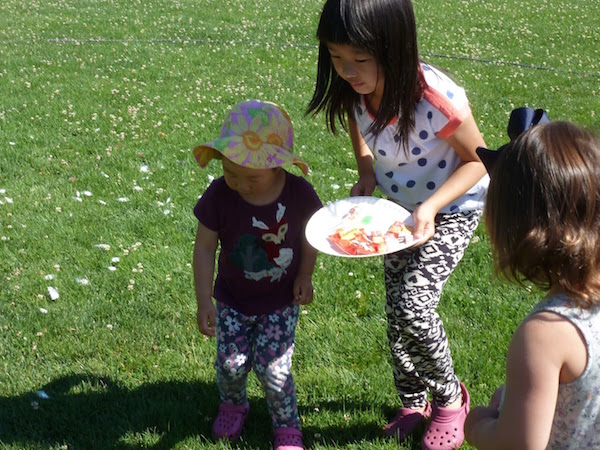 The Greenacres' Annual 4th of July Celebration at the Greenacres field was a huge success this year. Neighborhood residents ate bagels and cream cheese, Munchkin donuts, watermelon and coffee. Children and adults participated in races and events in the field with a candy hunt for the youngest set. A patriotic ceremony was led by the Cub Scout Color Guard and accompanied by Jack Binder on trumpet. There was the perfect amount of sunshine and thanks to the Scarsdale Fire Department and their super soaker truck, the kids and adults got to cool off at the end. Greenacres residents never disappoint with their community gatherings.
The Greenacres' Annual 4th of July Celebration at the Greenacres field was a huge success this year. Neighborhood residents ate bagels and cream cheese, Munchkin donuts, watermelon and coffee. Children and adults participated in races and events in the field with a candy hunt for the youngest set. A patriotic ceremony was led by the Cub Scout Color Guard and accompanied by Jack Binder on trumpet. There was the perfect amount of sunshine and thanks to the Scarsdale Fire Department and their super soaker truck, the kids and adults got to cool off at the end. Greenacres residents never disappoint with their community gatherings.
Here's a list of the many winners of the events: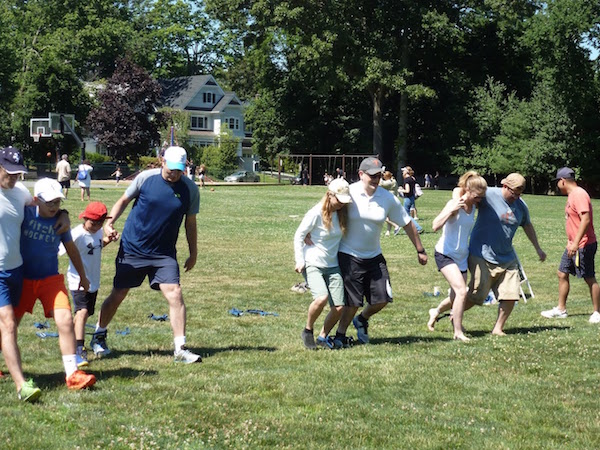
3-Legged Race
Parent/Child
Round 1:
1st - Kirwan King/ Carter King
2nd – Leon Zhou/ Joe Zhou
3rd – Caroline Bollen/Gregor Bollen
Round 2:
1st – Halle Jakubowicz/ David Jakubowicz
2nd – Alison Snyder/ Eve Snyder
3rd – Tess King/ Anne King
Round 3:
1st – Kayla Jakubowicz/ David Jakubowicz
2nd – Ethan Faucette/ Tamara Faucette
3rd – Alyssa Marvin/ Lynn Marvin
Pre School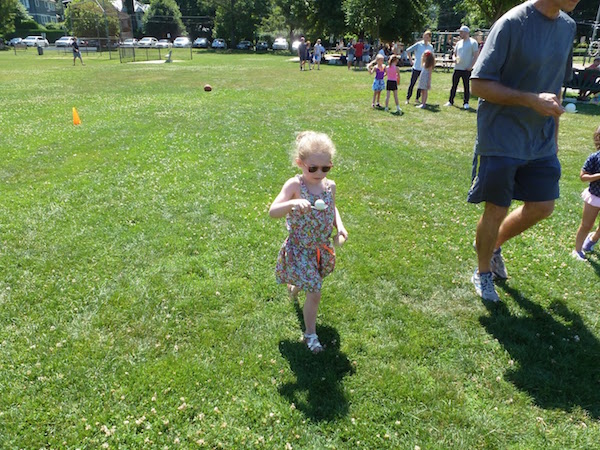
2nd - Zoe Goldstein/ Owen Dubinsky
3rd - Jonah Bloomgarden
K – 1st Grade
1st - Caroline Bollen/Allison Snyder
2nd - Rachel Schwartz/Isabella Rabinovich
3rd - Andy Marvin/ Tess King
Phoebe Schutzer/ Whitney Rudneske (tie)
2nd – 3rd Grade
Round 1:
1st – Rachel Kershner/Lauren Zoland
2nd - Blair Rudenske/ Alison Snyder
3rd - Matthew Glassman/ Joyce Liu
Round 2: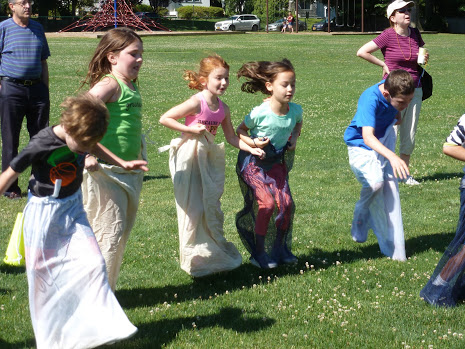
1st - Nicholas Faraco/ Andrew Faraco
2nd - Michelle Meiselman/ Isabella Tse
3rd - Ethan Faucette
Round 3:
1st - Rashel Kershner/Alyssa Marvin
2nd - Lauren Zoland/Jocelyn Zoland
4th – 8th Grade
1st – Jackie Kershner/ Allison Kahn
2nd – Halle Jakubowicz/ Ashley Jakubowicz
3rd – Kayla Jakubowicz/ Juliette Bollen (tie)
Catherine Faucette/ Cecilia Faucette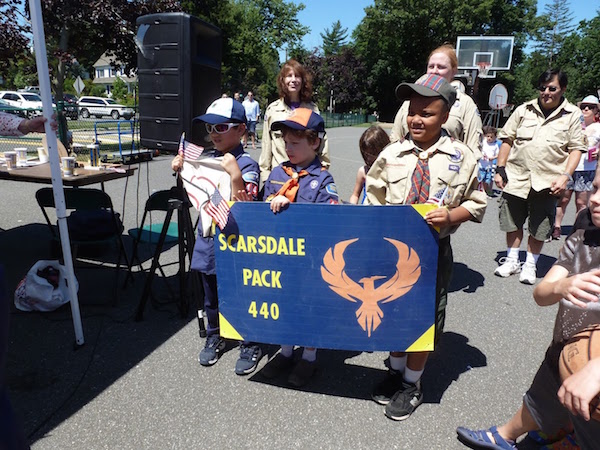
Teen – Adults
1st – David Jakubowicz/ Pamela Jakubowicz
2nd – Taylor Shiley/ Jordan Wayne
SPOON RACE
Pre-School
Round 1:
1st – Brooke Schutzer
2nd – Zachary Weiner
3rd – Louisa Tse
Round 2:
1st – Sibel Kopelman
2nd – Nathan Chen
3rd - Aria Chen, Jonah Bloomgarden (tie)
Round 3:
1st – Owen Dubinsky, Zoe Goldstein (tie)
3rd – Asher Aggarwal, Miles Levinson (tie)
K – 1st Grade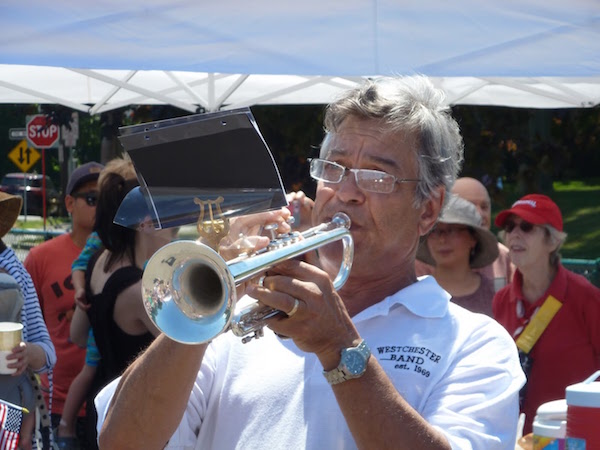
Round 1:
1st – Phoebe Schuster
2nd – Tess King
3rd – Caroline Bollen, Whitney Rudenske, Katelyn Shi (tie)
Round 2:
1st – Leonardo Zhou
2nd – Isabella Rabinovich
3rd – Gabriella Silva, Rachel Schwartz (tie)
2nd – 3rd Grade
Round 1:
1st – Maya Rabinovich
2nd – Rachel Kershner
3rd – Allison Snyder
Round 2: 1st – Matthew Zoland, Ozan Kopelman (tie)
3rd – Matthew Glassman
4th – 8th Grade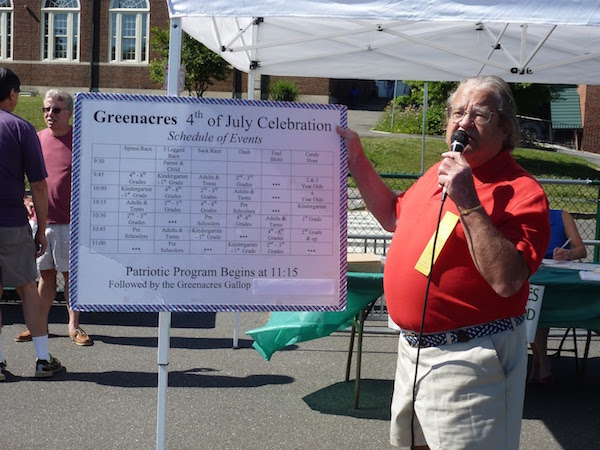
Round1:1st - Mitchell Breakstone
2nd – Kirwan King
3rd – Alyssa Marvin
Round 2: 1st – Jackie Kershner
3rd – Catherine Faucette
SACK RACE
Pre School
1st – Brooke Schutzer
2nd – Owen Dubinsky
3rd – Whitney Rudsenske
K- 1sr Grade
1st – Leonardo Zhou
2nd- Phoebe Schutzer
3rd – Isabella Rabinovich, Jasmine Davis (tie)
2nd – 3rd Grade
1st – Leo Chavis
2nd – Alyssa Marvin
3rd – Blair Rudsenske, Maya Rabinovich (tie)
4th – 8th Grade
1st – Kirwan King
2nd – Catherine Faucette
3rd – Allison Kahn, Jackie Kershner, Mitchell Breakstone, Juliette Bollen, Kayla Jakubowicz
DASH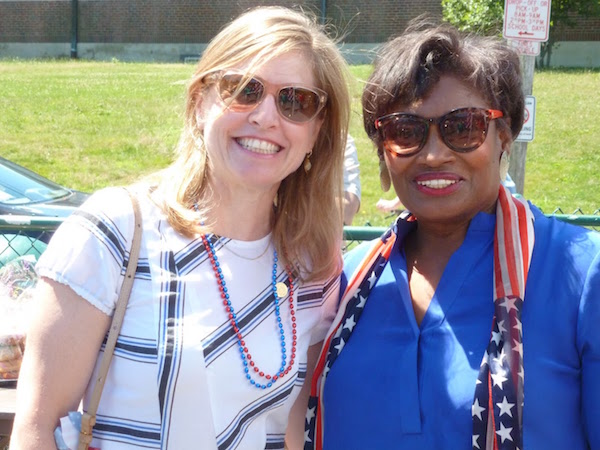
Pre School
Round 1:
1st – Harrison Glantz
2nd – Brooke Schutzer
3rd – Jordan Schutzer
Round 2:
1st – Maddie Glantz
2nd – Julia Marvin
K – 1st Grade
Round 1:
1st – Phoebe Schutzer, Whitney Rudsenske (tie)
2nd – Samuel Cascade
3rd – Matthew Weiner
Round 2: 1st – Miles Levinson, Samuel Cascade (tie)
2nd – Jasmine Davis, Jonah Bloomgarden (tie)
3rd – Gabriella Silva
2nd – 3rd Grade
Round 1: 1st – Alyssa Marvin
2nd – Blair Rudsenske
3rd – Michelle Meiselman
Round 2: 1st – Charlie Robertson, Matthew Glassman
2nd – Joyce Liu
4th – 8th Grade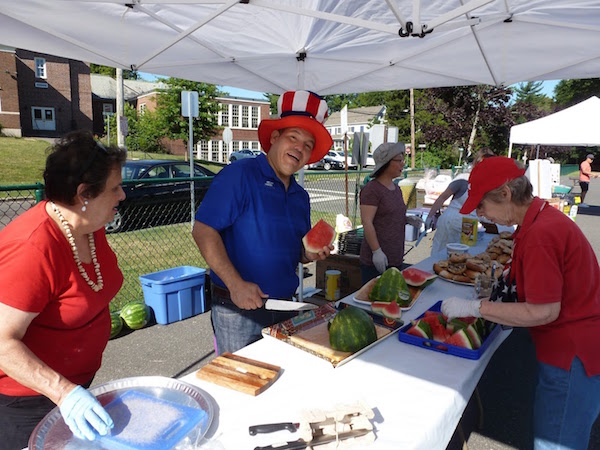
Round 1: 1st – Allison Kahn
2nd – Jackie Kershner, Kirwan King, Ben Weiner
Round 2: 1st – Catherine Faucette, Mitchell Breakstone
2nd – Halle Jakubowicz, Kayla Jakubowicz
FOUL SHOTS
2ND – 3RD Grade
1st – Spencer Hellman
2nd – Charlie Robertson
3rd – Ryan Dedianous
4th – 8th Grade
1st – Catherine Faucette
2nd – Mitchell Breakstone
3rd – Halle Jakubowicz
Adult – Teen
1st - Warren Breakstone
2nd – Melvin Tan
Suzanne Seiden's Last Game
- Details
- Written by: Joanne Wallenstein
- Hits: 7760
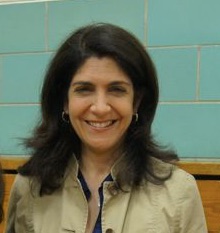 To coin one of Suzanne Seiden's favorite metaphors, the MVP of the Scarsdale Board of Education has completed six years of service to the community. Monday June 20th marked her final game, and even then, she didn't get off easy when the marathon meeting ran until 12:21 am. But then again, her tenure on the board was anything but easy.
To coin one of Suzanne Seiden's favorite metaphors, the MVP of the Scarsdale Board of Education has completed six years of service to the community. Monday June 20th marked her final game, and even then, she didn't get off easy when the marathon meeting ran until 12:21 am. But then again, her tenure on the board was anything but easy.
After receiving her nomination from the School Board Nominating Committee, Bob Harrison decided to challenge her for her seat on the board. For most candidates, the nomination by the SBNC is a virtual guarantee of a seat on the School Board. But not for Suzanne. She had to campaign, shake hands at the train station and launch a fully coordinated effort to win the seat, which of course she did and ultimately scored a resounding victory.
coordinated effort to win the seat, which of course she did and ultimately scored a resounding victory.
Once on the board, she had little time to learn the ropes before she took on the vice presidency and presidency, jobs that are traditionally done by more seasoned members of the board. As other were not willing or able to serve, she stepped up and did an exemplary job. In subsequent years, two board members opted not to run for second terms, leaving her as one of the more senior members of the board for most of her tenure.
During this time, a budget failed for the first time in over 40 years and she was instrumental in getting it passed a few weeks later. After a contentious year, Dr. McGill, the district's long-time superintendent announced his plans to retire, and Suzanne again stepped up to lead a national search for a new superintendent. The following year, the district lost both Joan Weber and Linda Purvis, leaving big voids in the administration and requiring further searches for personnel. She became a mentor, a leader and the institutional memory for a board and administration with little history.
She was unfailingly gracious, upbeat and composed through contentious discussions and lengthy meetings, peppering her comments with humor.
These good traits were noted by her colleagues and community leaders who toasted her on Monday;
Board President Lee Maude:
It's hard to believe but we are coming to the end of your six years of service for the Scarsdale Schools and students. This followed your years in the PTAs, PTA President for the Middle School and the PTC. Your level of commitment and your professionalism are exemplary. You are not one to ever complain about the workload though we have heard you bicker about the pay. There are so many in the community always asking what are we doing for them. While you Suzanne are always asking what you can do for others. It is part of your DNA, and this town is so fortunate to have you.
Suzanne you have many amazing strengths let me touch on a few. In all our Board discussion you are always reminding us of the need to be thoughtful and compassionate in our dealings with the teachers, students and families. You have also reminded us and rightly so to thank the teachers for their tireless work on behalf of our students. You always thank members of the community who speak at public comment sessions regardless of their point of view. In our policy discussion you have reminded us of those families under duress and making sure we are thoughtful as we design policy. We hope in the years ahead you bring your thoughtfulness and compassion to other groups in Scarsdale so that we may continue to benefit from your wise counsel.
You have been the bearer of board tradition and with the help of Lois helped us maintain board practices. The Board underwent tremendous change during your year of Presidency and you met the challenge in an open and rigorous manner laying out a work plan for the year that we all could follow. You also encouraged us to meet with former board members, which many of us did. This was so helpful and I hope we continue the practice.
Scarsdale Schools District is an institution with a proud heritage. Our job as board members is less of owners and more of caretakers (to quote Dr McGill). Suzanne you have taken great care in your work to preserve what is great about our schools and to guide the institution forward.
And as a board member and board President you can have no greater impact on a district than helping to recruit and hire a new Superintendent. Hiring a Superintendent for Scarsdale is no small task and you did a tremendous job in the process of hiring and vetting search firms, working with Chuck Fowler and completing focus groups, surveys and hours of interviews. And of course we found Thomas. In the last two years Thomas has taken a leading institution and put us on a new trajectory as an institution ready to accept change. Suzanne this could not have happened without your leadership. As a board member we hope to serve and leave the Scarsdale School District no worse than when we joined. But you Suzanne have had an immense impact on this place that will be felt for many years. We cannot thank you enough for that.
Thank you Suzanne. You are a truly remarkable person and we will miss you on the Board.
Board Vice President Bill Natbony said, "Our kids grew up in Quaker Ridge together." He appreciated her "compassion, wisdom, wit, sports analogies," and said Seiden was "Truly a team player." He credited her with bringing stability to the board during her year as president and thanked her for personal advice that allowed him to grow as a board member and as a person.
Pam Fuehrer told Seiden that she had admired her for a long time, calling Seiden
her "favorite program of professional development." She said she will remember Seiden saying, "There's more that unites us than divides us in this district.
Art Rublin told Seiden, "You've been the best kind of mentor ... not only have you had wise things to say but you guided by example....You faced a unique challenge in a contested election and served the community with high distinction. You radiated positive energy and brought out the best in people. You distinguished yourself with your sense of humor and seriousness of purpose. You are compassionate but didn't shy away from tough decisions. You provided critical leadership for the bond passage and successfully led a nationwide search for superintendent. You've left a tremendous legacy and you will be sorely missed."
Dr. Hagerman conveyed his regard and affection for Suzanne saying, "Though speeches are often inflated by hyperbole, this one is not.... I wouldn't be here in Scarsdale without Suzanne. She provided me with support and encouragement throughout the search process.... She is a true believer in Scarsdale.... I was immediately drawn to her warmth and authentic demeanor. After arriving I learned more about Suzanne. When I was moving in I got a call from Suzanne and she headed over with coffee and bagels. She always says thank you and lauds the achievements of others. She genuinely cares about people and understands their contribution to the greater good. She is the quintessential mother who always reaches out to let you know she is thinking about you.... As a board member she has been unwavering in her support and a strong steward of people, policy and finance. She firmly believes that when there is a will there is a way and does not take no for an answer. Luckily she is on the right side of the cause." Hagerman told Seiden, "Your legacy will live on in my eyes and the eyes of others who respect you for who you are and what you have done for all of us."
At the 8 pm session of the meeting, former Board colleagues Jill Spieler and Liz Guggenheimer also lauded Seiden. They said she was, "student-centric, shares WOW moments and is a consensus builder... She stays on topic and asks thoughtful questions ...She stepped us as a board officer after only one year of service. She guided us with grace patience and the utmost integrity." Spieler added, there are the three words our graduates should know, which Suzanne demonstrated, "Know, Think, Act." They presented her with a tote that said "Love Giving" and bagful of gifts.
Karen Ceske thanked Seiden on behalf of the board of the PT Council, saying her "Commitments have been steadfast, tireless and selfless." Ceske credited Seiden with "Insightful questions, reasoned judgment and a collaborative and practical approach." She said, Suzanne, "acknowledges peoples' hard work and valuable contributions, and even when it got tough she remained calm and kept her wonderful sense of humor." She said, "You are the consummate volunteer and we hope you will enjoy your well-earned relaxation." The PT Council made a gift to the PT Scholarship Fund in her honor.
Thanking everyone, Seiden said she felt "Pressure to use a sports metaphor." She said, "It's my last "at bat" and I am proud to be on this team. Being on the school board is a team sport – thanks to my teammates and my former colleagues... The district hits it out of the park everyday. You are all are home run hitters and you should be eligible for the Hall of Fame in Cooperstown."
Junior League Partners with Westchester County to Provide Critical Support for Diaper Need
- Details
- Written by: Stacie M. Waldman
- Hits: 5453
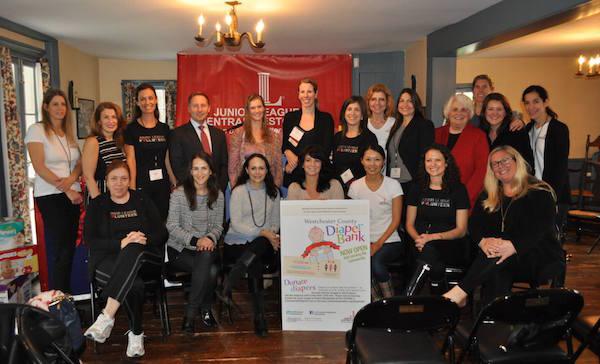 The Junior League of Central Westchester (JLCW) has a long, rich history of serving as a force for positive change in Central Westchester. Its members are all volunteers and come from Scarsdale, Eastchester, Greenburgh and White Plains and work to identify and remediate issues facing their local service area. Fundraising is an important part of the league and funds raised are used to support JLCW's mission to serve the local community where it is needed most.
The Junior League of Central Westchester (JLCW) has a long, rich history of serving as a force for positive change in Central Westchester. Its members are all volunteers and come from Scarsdale, Eastchester, Greenburgh and White Plains and work to identify and remediate issues facing their local service area. Fundraising is an important part of the league and funds raised are used to support JLCW's mission to serve the local community where it is needed most.
One of the most impressive and most successful projects to date has been JLCW's formation of the Westchester County Diaper Bank. In conjunction with Westchester County Executive Robert Astorino and the Department of Social Services, JLCW launched the Westchester County Diaper Bank in Fall 2014. This is the first diaper bank of its kind in our area. The Westchester County Diaper Bank (WCDB) collects wipes and disposable diapers of all sizes, types and brands and distributes clean diapers to families unable to afford them.
I had a chance to sit down with some league members to learn more about what the diaper bank is, why it's critical for helping those struggling to make ends meet, and about and how you can help.
Why do we need a Diaper Bank?
In Westchester County, 8,000 children age 4 and under are living in poverty; an additional 3,000 are in Temporary Assistance for Needy Families (TANF). Each child needs 50 diapers per week costing approximately $936 per year. Diapers are a basic need, not a luxury items. Diaper need has been coined "the silent epidemic."
Can't parents buy diapers for their children with WIC or Food Stamps (SNAP Program)?
Diapers cannot be obtained with food stamps, and no state or federal child safety-net program allocates dollars specifically for the purchase of diapers. While TANF covers diapers, its funds must be stretched to pay for other living expenses which doesn't leave much to keep baby bottoms clean and dry. Little if any money is left over to purchase enough to cover the $80 needed per month for diapers. With the support of the Westchester County Government, JLCW and the local community, diapers are now being distributed through the Westchester County Diaper Bank.
What is the impact of lack of diapers for a child?
Without an ample supply of diapers, babies wear used diapers or wear a diaper for too long. These habits, often seen as the only choice by caregivers, lead to poor health from infections, emotional struggles in babies due to discomfort, missing ritual/bonding time (mothers and babies) and distress from tough choices, e.g. pay bills or buy diapers. Babies who wear soiled diapers for too long are at higher risk of dermatological infections and urinary tract infections. Access to diapers alleviates infection, discomfort, emotional struggles and stress.
Why not just use cloth diapers?
Working caregivers must provide sufficient disposable diapers and wipes to daycare facilities and risk missing work if they can't. Washing facilities are often not available to low income families and most laundromats won't allow cloth diapers. Cloth diapers also have a high up-front cost.
Who operates the Westchester County Diaper Bank?
JLCW sources diapers, screens and processes applications, and packages diapers. The Westchester County Department of Social Services (DSS) transports and stores the diapers, and distributes them to applicants.
How many children do you serve?
As of February 1, 2016, the Westchester County Diaper Bank has collected nearly 300,000 diapers and has distributed nearly 180,000 diapers to caregivers. Approximately 12,500 diapers are being distributed per month to needy people which translates to 250 children per month or 3,000 per year. The demand continues to rise, however.
Who is eligible to receive diapers?
Westchester County residents who are parents, guardians or caregivers for children 3 ½ years of age and younger are eligible to receive diapers. Applicants must show proof of residency (e.g., driver's license or a recent utility/rent bill) and the child's birth certificate upon diaper pickup. Although the JLCW partners with DSS, a family does not have to be an existing DSS client to apply for diapers.
How does someone apply for diapers?
More information can be found here:
It's amazing that this service never existed before the JLCW partnership. How can other people help?
• Host a diaper drive with your school, business, civic group, neighborhood or faith organization.
• Donate diapers to the diaper bank including leftovers and opened packages, pull ups, and wipes. There's a bin on the porch at Wayside Cottage, 1039 Post Road, Scarsdale.
• Donate funds to the diaper bank by clicking here.
• Volunteer with JLCW to help support the diaper bank. The next event is coming up on June 18th. Come to Wayside Cottage and help sort and package diapers and wipes from 9:30 AM- Noon, or drop some off that day.
• Use social media to raise awareness and use hashtags #DiaperNeed, #DiaperGap and #DiaperOn.
For more information on the Westchester County Diaper Bank, click here, email: jlcwdonatediapers@gmail.com or call 914-723-6442.
Recycle Children's Bikes for Kids in Need
- Details
- Hits: 6517
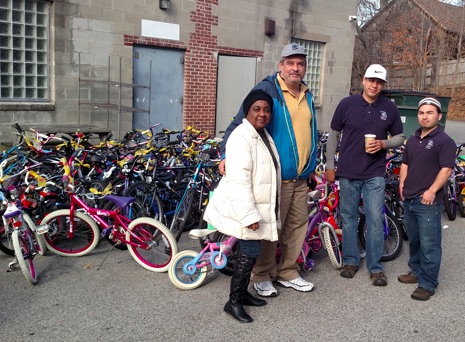
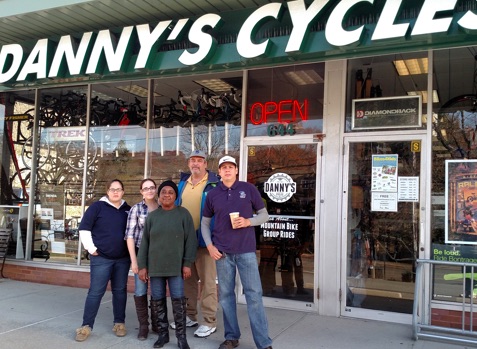 A local resident noticed that many people are disposing of their children's bicycles at the dump and suggested that there is something far better to do with bikes your kids have outgrown. A program called Good Goes Around can recycle the bike and give it to a child who cannot afford to buy one.
A local resident noticed that many people are disposing of their children's bicycles at the dump and suggested that there is something far better to do with bikes your kids have outgrown. A program called Good Goes Around can recycle the bike and give it to a child who cannot afford to buy one.
Good Goes Around helps recycle "gently-used" children's and teen bicycles and distributes them to kids who can't afford to buy bikes. It is a non-profit model program pairing up local bike shops and social service agencies with those interested in donating bikes and volunteering their time. If you donate a bike they will present you with a receipt for a tax deduction.
Biking is a great form of exercise. As childhood obesity and diabetes continue at epidemic levels, you can begin to make a dent in these critical healthcare problems by helping children to experience the joys of pedaling. Good Goes Around will donate the tuned up bikes to children in need. If you have a bike you would like to donate bring to Danny's Cycles on Central Avenue.
DANNY'S CYCLES
644 Central Ave.
Scarsdale, NY 10583
914-723-3408
Paulie's Warriors Run
- Details
- Hits: 4421
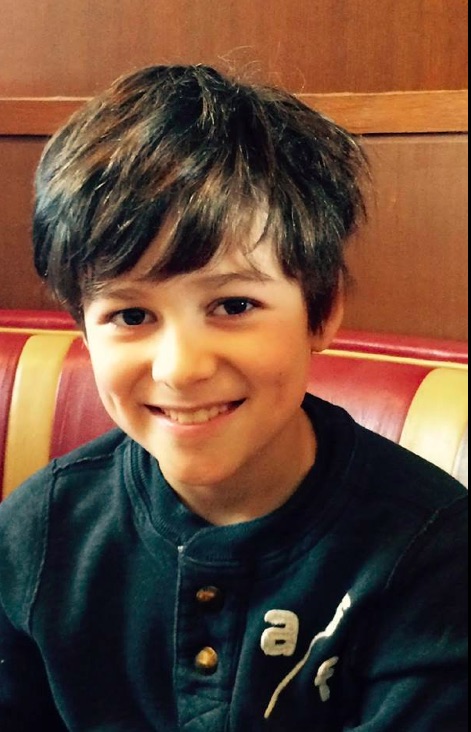 Each year, fifth grade students at Greenacres Elementary School select a community service project. This year, after losing their friend and classmate Paul Ulysses Jimenez to a brave battle with rhabdomyosarcoma, they have dedicated themselves to raising awareness and research funds to fight pediatric cancer.
Each year, fifth grade students at Greenacres Elementary School select a community service project. This year, after losing their friend and classmate Paul Ulysses Jimenez to a brave battle with rhabdomyosarcoma, they have dedicated themselves to raising awareness and research funds to fight pediatric cancer.
To that end, fifth graders are organizing Paulie's Warriors Run, to take place at 9am on June 11, 2016 at the Scarsdale High School. Participants will have forty-five minutes to run/walk around the track and will solicit donations to pediatric cancer research in support of their efforts.
Students, teachers and parent volunteers, have created an event logo and t-shirt, and solicited event participation and corporate donations. They will also donate their time on June 11th to help with set-up, clean-up and assist at the various stations during the Run.
Run participants will be soliciting funds for three organizations dedicated to funding pediatric cancer research. These organizations include the PaulieStrong Foundation, a foundation created by Paul's family dedicated to raising awareness and funding to eliminate childhood cancers. Funds raised through PaulieStrong will go directly to the Pediatric Oncology Team at Memorial Sloan Kettering Cancer Center to help fund research to find a cure for pediatric cancer.
Donations in support of Paulie's Warriors Run can be made at www.pauliestrong.org.
To register for the Run please register at https://www.eventbrite.com/e/paulies-warriors-run-tickets-24287549715. Registration is $25 includes the Paulie's Warrior's Run T Shirt designed by the Greenacres 5th Graders.
For more information, please contact Demece at paulieswarriors@gmail.com.










